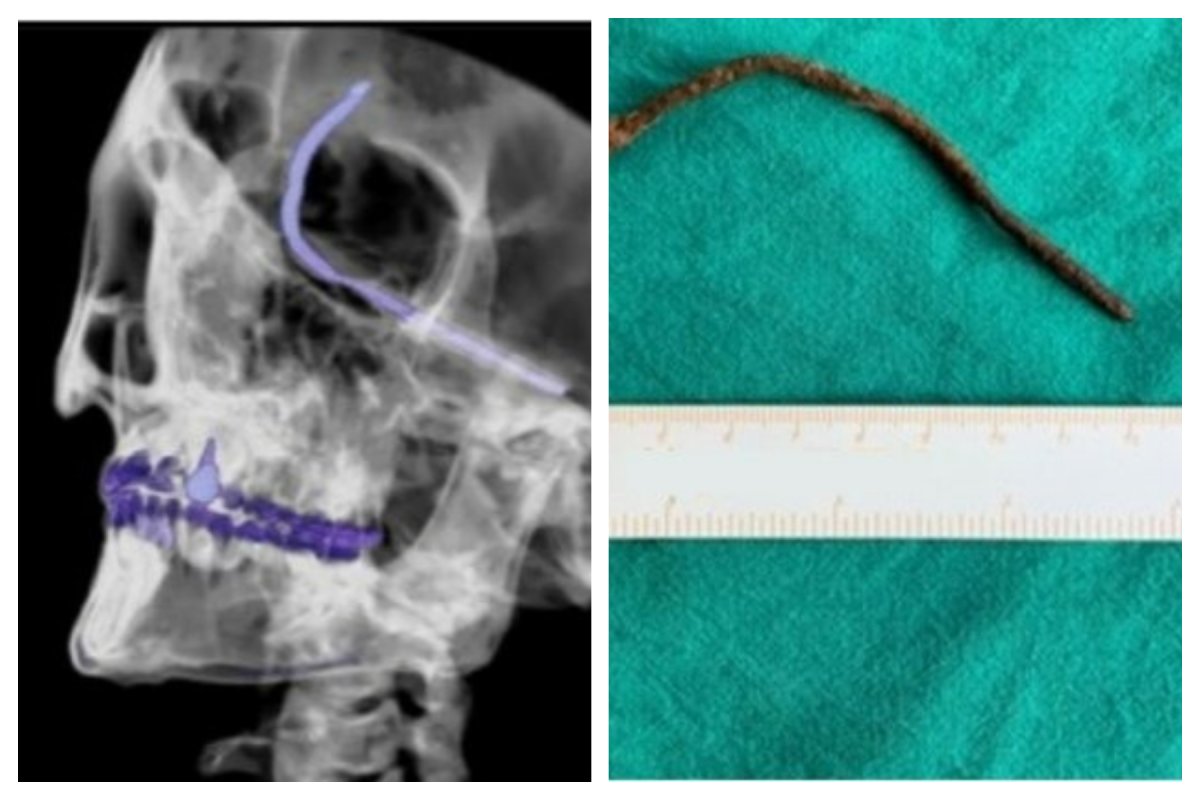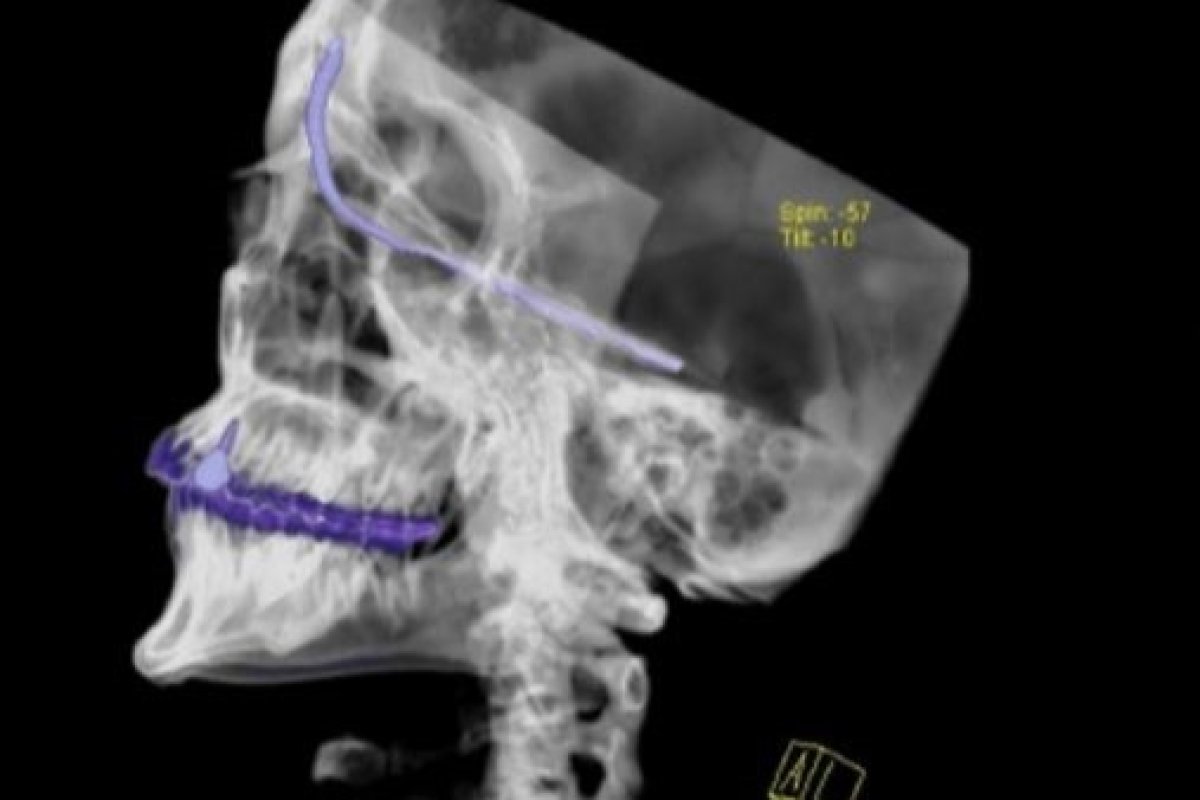A man whose skull and brain were skewered with a metal rod, which was concealed in the soil on the farm he was working in Portugal, has survived the trauma. When machinery ran into the rod, it was flung into his head and pierced his temporal lobe.
The man was rushed to Coimbra Hospital and University Centre, where surgeons removed the rod. He recovered well and "a complete neuro-ophthalmological exam showed no abnormalities," a paper published in the journal BMJ Case Reports details.

According to the CDC, there were more than 64,000 deaths relating to traumatic brain injuries in the U.S. alone in 2020, and between 35 and 50 percent of people suffering penetrating brain injuries are thought to die of their wounds.
Stephanie J. Forkel, a neuroscientist at Radboud University in Nijmegen, Netherlands, told Newsweek: "The metal entered the brain from the bottom of the frontal lobe and advanced into the temporal lobe.
"The temporal lobe is relevant for memory, language, emotions, and visual processing. But it all depends on which part of the lobe was disconnected and how much of it."
Forkel added: "In this case, the metal was placed laterally, sparing the networks for memory and emotions. Because it's the front of the temporal lobe, visual processing should also be intact, which was confirmed by the authors.
"The injury may have temporarily impacted on his language abilities, but a more subtle aspect than what would be assessed in an emergency setting."
The patient appears to have been very lucky, with the rod missing any vital parts of his brain, as well as any crucial blood vessels.
"The diameter and curvature of the rod that entered the skull, together with the point of entry, all combined to provide a lucky escape for this patient that meant he appears to have survived with few complications," Tony Rao, a visiting researcher in old age psychiatry at King's College, London, told Newsweek.
"The only immediate clinical effects appear to have been through damage to the eye muscles, but the damage could have been much worse," he said.
"The optic nerve and nerves supplying the face pass through the sphenoid bone, which the rod penetrated. This bone also houses the pituitary gland, which releases a number of hormones into the bloodstream such as those controlling metabolism and sexual function."
Rao added: "The patient was lucky that he missed these critical brain structures such as those involved with blood pressure and breathing."

Brain injuries can be extremely damaging to a person's health and can result in complications ranging from concussion to altered consciousness or even a vegetative state.
As the rod passed through the temporal lobe, it would have had a minimal impact on his behavior. If a different part of the brain had been damaged, such as the frontal lobe, then the patient's nature may have changed in the aftermath of the injury.
One such incident occurred in the infamous case of Phineas Gage, an American railroad construction foreman who survived a large metal tamping rod going straight through his head in Vermont in 1848.
While his survival was improbable, he lived for 12 years after the accident, although he experienced stark changes in his personality due to his left frontal lobe having been nearly completely destroyed.
According to his doctor at the time, Gage became "fitful, irreverent, indulging at times in the grossest profanity (which was not previously his custom), manifesting but little deference for his fellows, impatient of restraint or advice when it conflicts with his desires."
The BMJ Case Reports patient appears to have had no such negative side-effects, however.
"Because the rod passed through the temporal lobe, it would have had a minimal impact on his behavior," Rao said.
Forkel agreed: "The final lesion is relatively small and not in a strategically critical area of high-density brain connections, which will positively impact the patient's recovery."
Is there a health issue that's worrying you? Do you have a question about brain trauma? Let us know via health@newsweek.com. We can ask experts for advice, and your story could be featured on Newsweek.
References
Henriques, V., de Matos, D. Transorbital intracranial penetrating injury by a metal rod extending to the temporal lobe. BMJ Case Reports CP, e253506, (2022). http://dx.doi.org/10.1136/bcr-2022-253506
O'Driscoll K., Leach J.P. "No longer Gage": an iron bar through the head. Early observations of personality change after injury to the prefrontal cortex. BMJ. 317 (1998). https://doi.org/10.1136%2Fbmj.317.7174.1673a
Uncommon Knowledge
Newsweek is committed to challenging conventional wisdom and finding connections in the search for common ground.
Newsweek is committed to challenging conventional wisdom and finding connections in the search for common ground.
About the writer
Jess Thomson is a Newsweek Science Reporter based in London UK. Her focus is reporting on science, technology and healthcare. ... Read more
To read how Newsweek uses AI as a newsroom tool, Click here.








